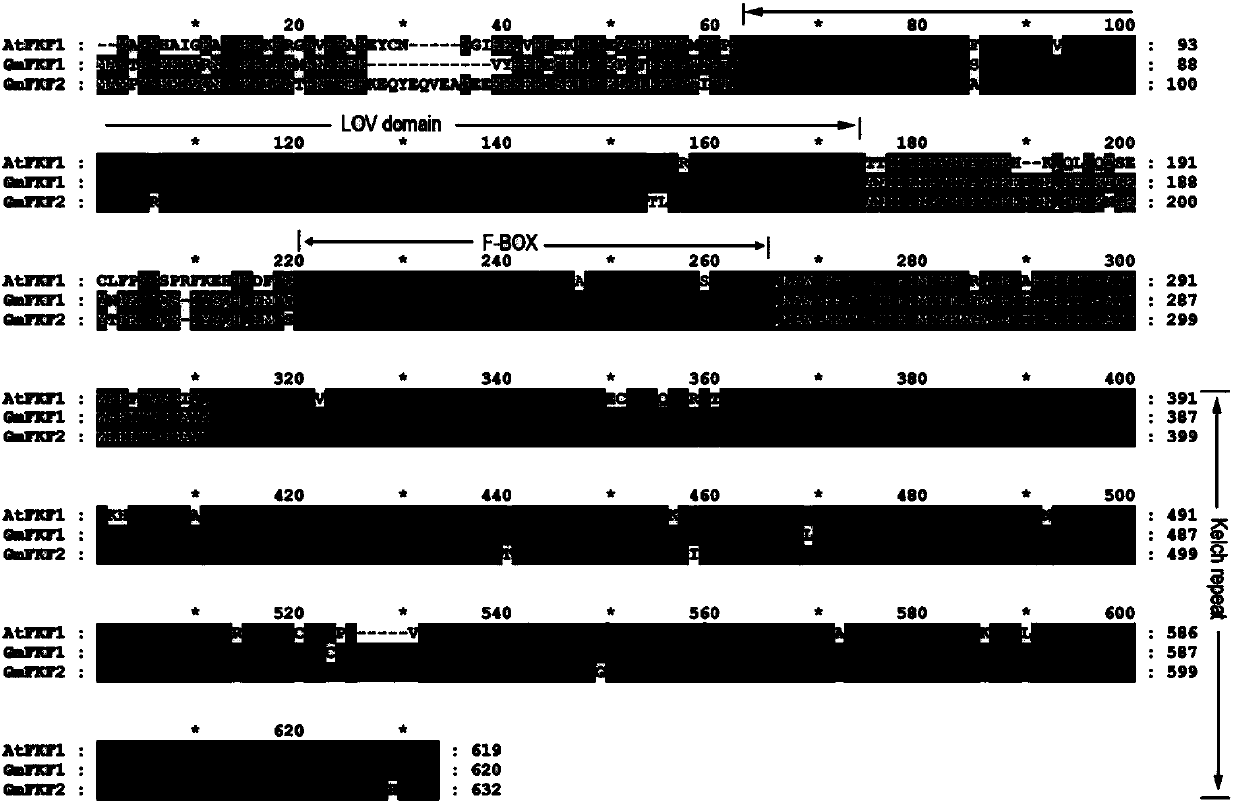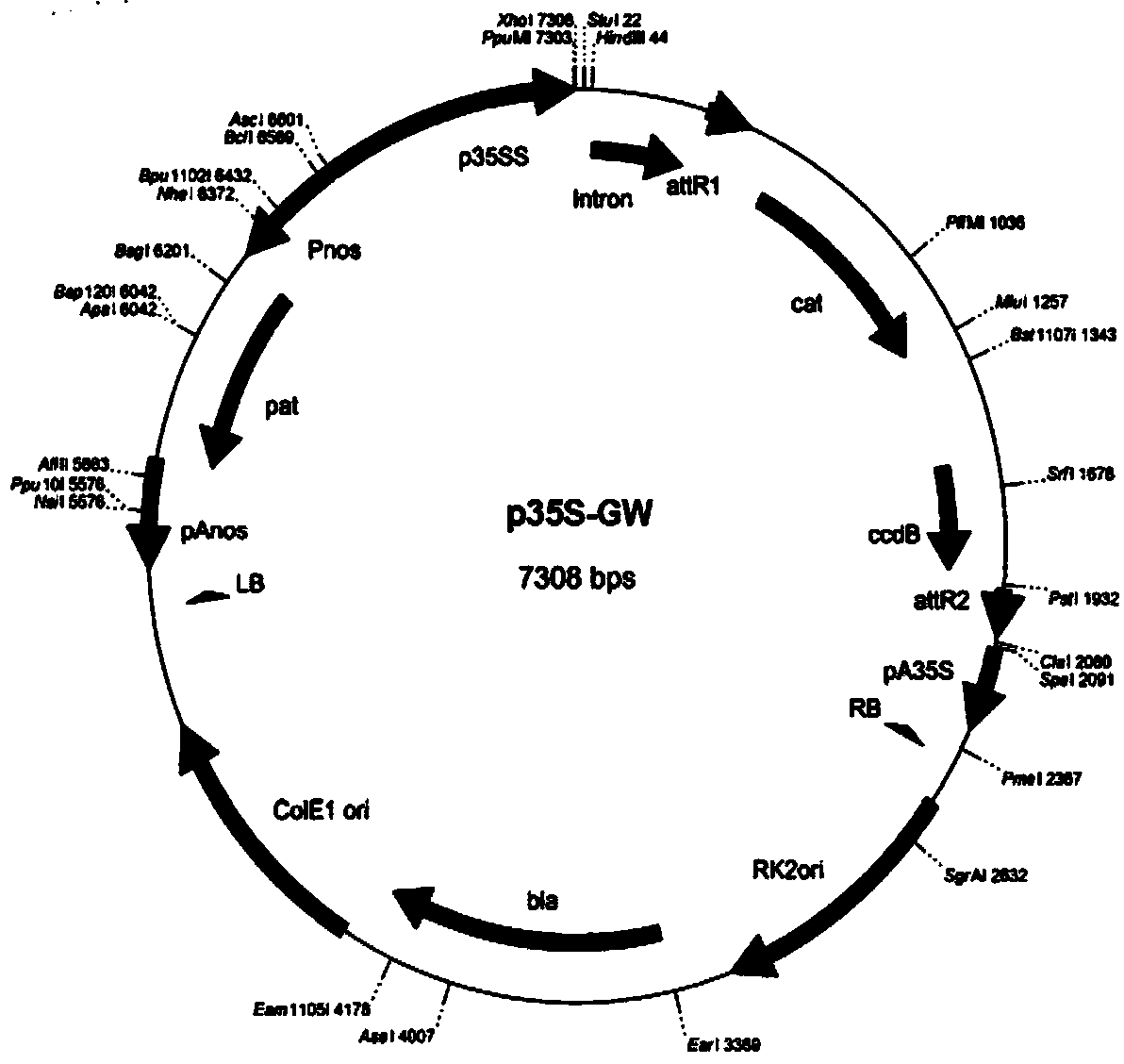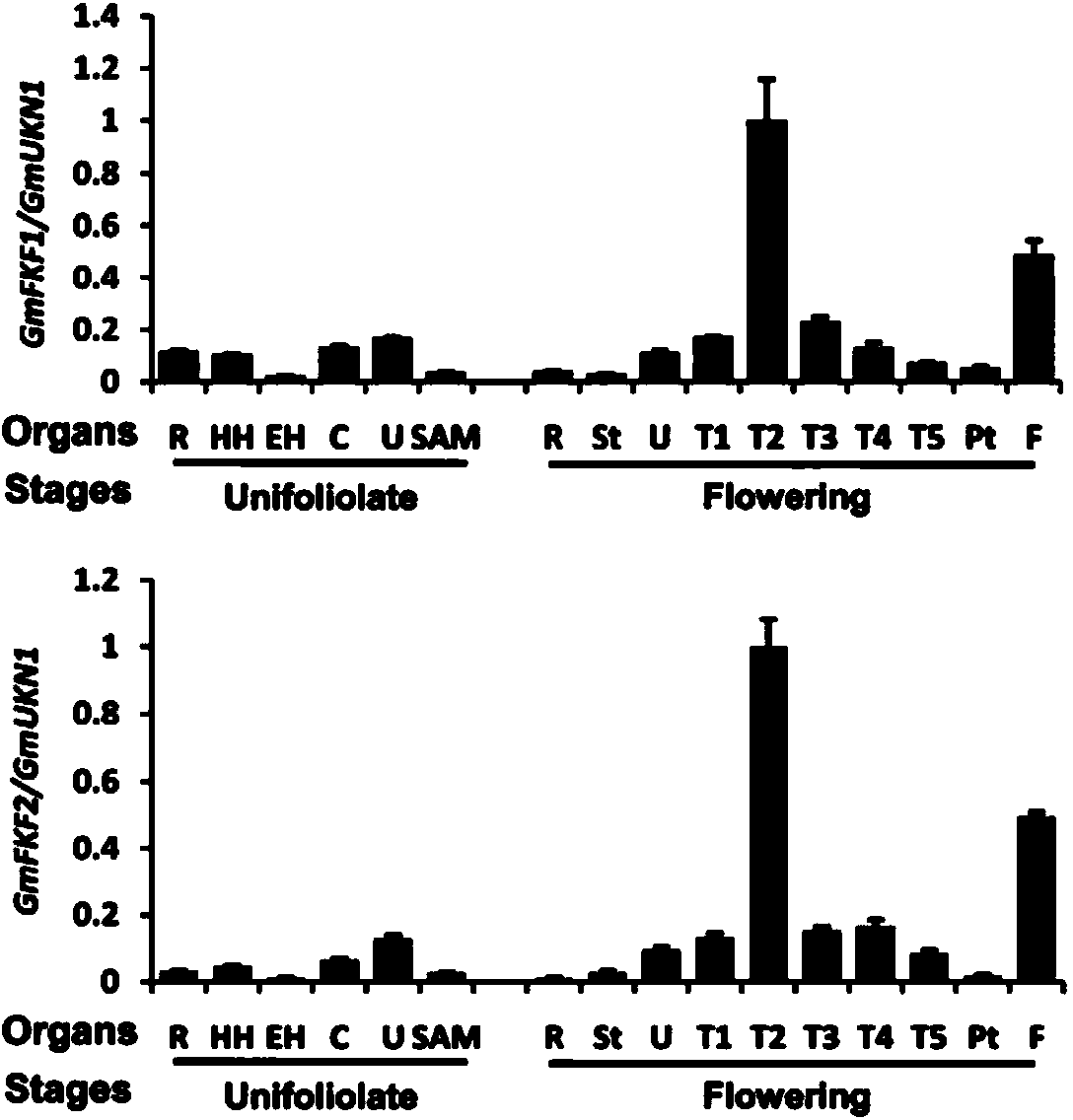Soybean biological clock gene GmFKF2, encoding protein, and applications thereof
A gene and soybean technology, applied in the regulation of plant photoperiod and flowering time, in the field of soybean circadian clock genes, can solve the problems of changing the sensitivity of plants to photoperiod and flowering time, so as to promote plant flowering and prolong plant growth period effect
- Summary
- Abstract
- Description
- Claims
- Application Information
AI Technical Summary
Problems solved by technology
Method used
Image
Examples
Embodiment 1
[0043] Example 1 Cloning of soybean circadian clock genes GmFKF1 and GmFKF2
[0044] The GmFKF1 gene was amplified from soybean Kennong 18 (Glycine max L. Kennong18) by RT-PCR using forward primer 5'-ATGGCTGTGACAAAAGAGAAAGAGGAT-3' and reverse primer 5'-TCACAGGTCAGAGTCCTGTCGAC-3'.
[0045] The GmFKF2 gene was amplified from soybean Kennong 18 (Glycine max L. Kennong18) by RT-PCR using forward primer 5'-ATGGCCATGCCAAAAGAGAAA-3' and reverse primer 5'-TTCACAGGTCAGAGTCATGTCGA-3'.
[0046] The PCR reaction program was: pre-denaturation at 95°C for 5min, denaturation at 95°C for 30S, annealing at 50°C for 35S, extension at 72°C for 1min and 50S, 30 cycles, and extension at 72°C for 10min.
[0047] Obtaining of GmFKF1 and GmFKF2 cloning vectors: clone the amplified PCR products directly into such as figure 2 on the indicated pGWCm vector. Firstly, the pGWCm vector was hydrolyzed with Ahd I endonuclease, and then the digested product was recovered with a gel recovery kit to obtain t...
Embodiment 2
[0049] Example 2 Amino Acid Sequence Analysis of Proteins Encoded by Soybean Circadian Clock Genes GmFKF1 and GmFKF2
[0050] The similarity between GmFKF1 and GmFKF2 protein sequences encoded by soybean circadian clock genes GmFKF1 and GmFKF2 and Arabidopsis thaliana FKF1 (AtFKF1) protein is high: the similarity between GmFKF1 and GmFKF2 and AtFKF1 is 83.5% and 81.4%, and the similarity between GmFKF1 and GmFKF2 The origin is 95.5%, and they are highly similar in the conserved functional domain (MYBDAN-binding domain), such as figure 1 shown. Therefore, it is speculated that GmFKF1 and GmFKF2 have similar functions to Arabidopsis FKF1 and have the activity of promoting plant flowering.
Embodiment 3
[0051] Example 3 Expression levels of soybean circadian clock genes GmFKF1 and GmFKF2 in different tissues and organs and different developmental stages in soybean
[0052] The expression of soybean circadian clock genes GmFKF1 and GmFKF2 in soybean was determined by quantitative real time RT-PCR. Real-time fluorescent quantitative PCR was carried out using ABI StepOne, and SYBR Green I was used to detect the fluorescent signal.
[0053] FKF1 upstream primer: 5'-GCATAAAACCAGACCCTCTTCTCTC-3';
[0054] FKF1 downstream primer: 5'-CAATCATGTAATAGTGGCTCATATAC-3';
[0055] FKF2 upstream primer: 5'-AAAGATTTTGGGTGGGTTTCC-3';
[0056] FKF2 downstream primer: 5'-GTGTAATAGACGGTGGAGGAG-3'.
[0057] The reaction system is:
[0058]
[0059] The reaction parameters were two-step method: 95°C 10S, hot start; 95°C 5S, 60°C 1min, 40 cycles. Gene expression was normalized and plotted using gene chip data analysis software Genesis.
[0060] Soybean circadian clock genes GmFKF1 and GmFKF2...
PUM
 Login to View More
Login to View More Abstract
Description
Claims
Application Information
 Login to View More
Login to View More - R&D
- Intellectual Property
- Life Sciences
- Materials
- Tech Scout
- Unparalleled Data Quality
- Higher Quality Content
- 60% Fewer Hallucinations
Browse by: Latest US Patents, China's latest patents, Technical Efficacy Thesaurus, Application Domain, Technology Topic, Popular Technical Reports.
© 2025 PatSnap. All rights reserved.Legal|Privacy policy|Modern Slavery Act Transparency Statement|Sitemap|About US| Contact US: help@patsnap.com



